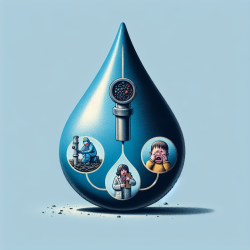Introduction: The Flint Water Crisis and Its Impact on Child Development
The Flint Water Crisis serves as a poignant reminder of the critical importance of environmental justice and its far-reaching implications on child development. The crisis, which began in 2014, involved the exposure of Flint, Michigan's residents to lead-contaminated water, resulting in a public health emergency. This catastrophe has highlighted the urgent need for practitioners, especially those in speech-language pathology, to consider environmental factors when assessing and treating children.
Understanding the Data: The Impact of Lead Exposure
Research has shown that lead exposure in children can lead to significant decrements in intelligence, behavior, and neurological functions. According to the study A Case Study of Environmental Injustice: The Failure in Flint, the percentage of children with elevated blood lead levels in Flint nearly tripled after the water source change. This highlights the insidious nature of lead poisoning, where the effects may not be immediately apparent but can have long-term consequences on cognitive and behavioral development.
Practical Implications for Practitioners
As practitioners, it is crucial to incorporate environmental assessments into our evaluations. Here are some practical steps to consider:
- Comprehensive Assessment: Include questions about environmental exposures in your case history forms. Understanding a child's environment can provide insights into potential risk factors for developmental delays.
- Collaboration with Other Professionals: Work closely with pediatricians and public health officials to ensure children at risk are identified and monitored for lead exposure.
- Advocacy and Education: Educate families about the risks of lead exposure and advocate for policies that promote safe environments for children.
Encouraging Further Research
The Flint Water Crisis underscores the need for ongoing research into the effects of environmental toxins on child development. Practitioners are encouraged to stay informed about the latest research findings and to contribute to the body of knowledge by participating in or initiating studies that explore the intersection of environmental factors and developmental outcomes.
Conclusion: Moving Forward with Environmental Justice
In conclusion, the Flint Water Crisis is a stark reminder of the importance of environmental justice and its impact on child development. By integrating environmental considerations into our practice, we can better support the children we serve and contribute to preventing future crises. To read the original research paper, please follow this link: A Case Study of Environmental Injustice: The Failure in Flint.










